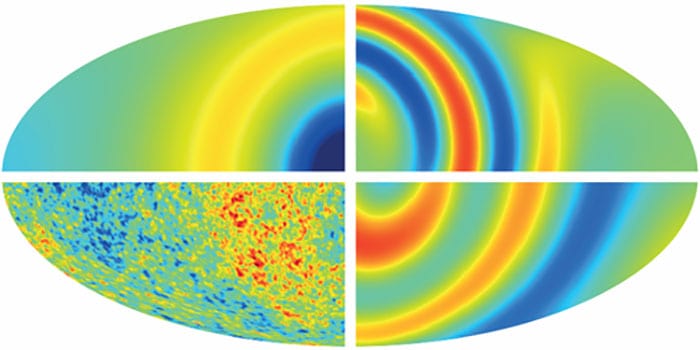
Flash Physics is our daily pick of the latest need-to-know developments from the global physics community selected by Physics World‘s team of editors and reporters
World’s largest radio telescope completed in China
Work has finished on the Five-hundred-meter Aperture Spherical radio Telescope (FAST) in Guizhou province in southern China. The world’s largest radio telescope, FAST comprises 4450 reflecting panels and is located in a natural depression in a remote region that is very quiet in terms of human radio signals. The collection area is more than twice as big in size as its nearest rival – the 300 m Arecibo telescope in Puerto Rico. FAST covers the 70 MHz–3 GHz frequency range and will be twice as sensitive as Arecibo and capable of surveying the sky 5–10 times faster. It will also be able to look at three times more sky than Arecibo. Built by the National Astronomical Observatories under the aegis of the Chinese Academy of Sciences, the telescope will now undergo a series of tests before astronomers – including some from outside China – are allocated observing time.
Tracing the origin of mercury in human hair
A new analytical technique that helps to identify the chemical forms of mercury in human hair has been developed by an international team of researchers. Human beings are exposed to varying amounts of mercury during the course of daily life – by consuming foods such as fish and rice, via metal-based dental fillings and compact fluorescence lamps, for example – and the neurotoxin can accumulate in the body over time. Determining the source of the mercury is essential for diagnosis and treatment purposes, but currently it is difficult to determine the molecular form of mercury in human tissues and fluids, which could indicate its source. Until today, depending on the suspected source of contamination, mercury intake has been monitored by measurement of mercury concentration in urine, blood or scalp hair. The researchers, based in France and Chicago, used the European Synchrotron Radiation Facility (ESRF) and found that the source of the mercury in human hair can be identified by precisely characterizing its bonding environment. Their experiments showed that, in one case, a mercury spike along a strand of hair was correlated with a specific unsafe removal of a dental amalgam. The team found that the synchrotron data provided signatures of the mercury sources, distinguished exogenous vs endogenous exposure to inorganic mercury, and indicated the timing to within one or two days of an exposure event. These results are published in Environmental Science & Technology.
The universe is isotropic, says latest study of the cosmic microwave background

The universe is the same in every direction, at least on very large distance scales. That is the conclusion of Daniela Saadeh and colleagues at University College London and Imperial College London, who have looked for evidence of large-scale spatial anisotropies or rotation in the cosmic microwave background (CMB). The CMB was created just after the Big Bang and permeates the cosmos. As a result, it provides a record of how the universe has been expanding over the past 13 billion years. The CMB appears nearly uniform across the sky with tiny fluctuations (about one part in 100,000) that are understood as density perturbations that are associated with the emergence of structures such as galaxies. Saadeh and colleagues have tested a wide range of possible anisotropy and rotation models against CMB data from the Planck satellite, and found the universe to be isotropic to within one part in 121,000. The study is described in Physical Review Letters.
- You can find all our daily Flash Physics posts in the website’s news section, as well as on Twitter and Facebook using #FlashPhysics. Tune in to physicsworld.com later today to read today’s extensive news story on a new nuclear-inspection protocol inspired by cryptography.



